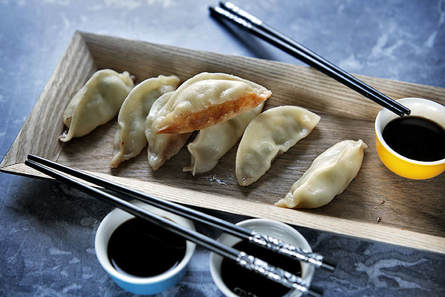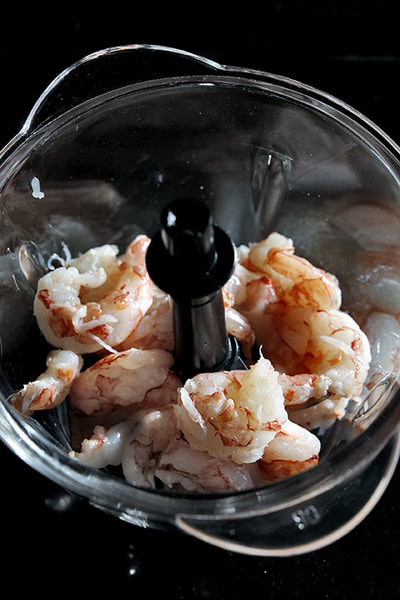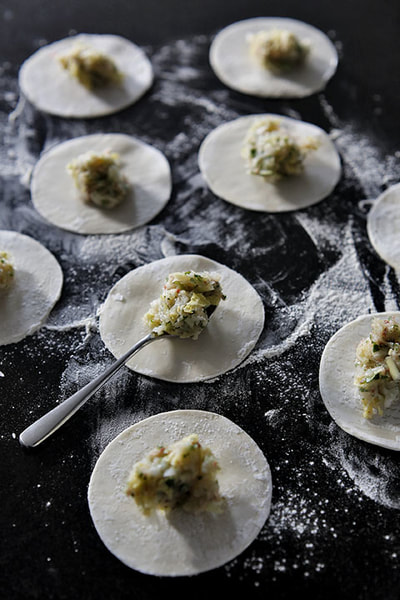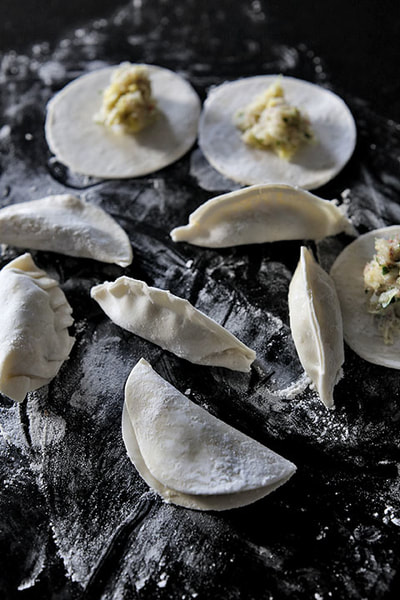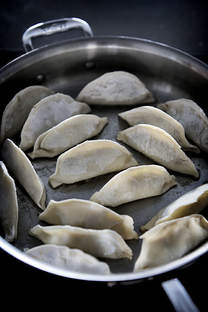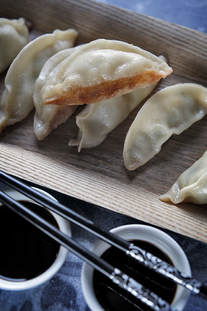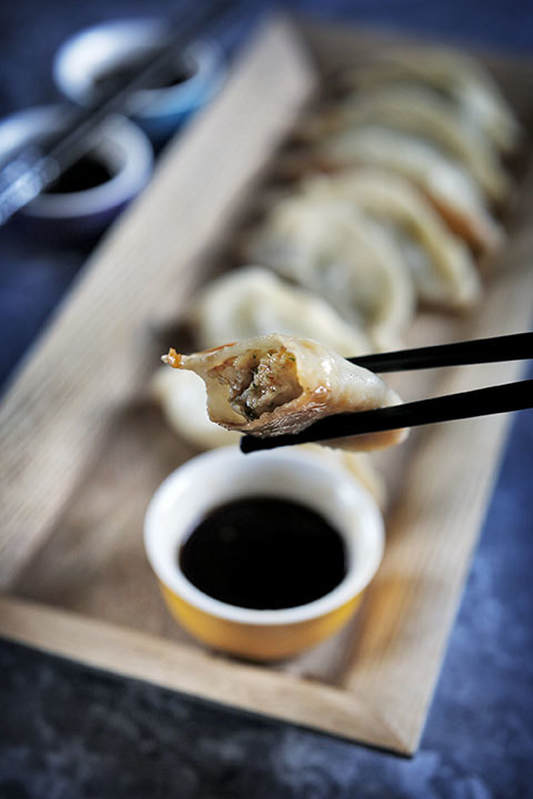
One of my favourite oriental dishes is the Potsticker dumpling or Gyoza.
These plump little pillows of dough, filled with a tasty mixture of seafood, vegetables and or minced pork are very addictive!
And because I can’t wait for my next trip to the takeaway, and because they are so easy to do, I now make them at home …..often.
You can boil or steam these dumplings but I prefer the contrasting textures of a crispy base with
soft, delicate sides that you get with a potsticker, created by the combination of frying and steaming in the same pan.
Potsticker dumplings are of Chinese origin with the story being that a chef, while boiling some dumplings (commonly called jiaozi in Asia) in a wok, left his station for a few minutes and on returning found that the water had boiled dry, leaving the dumplings stuck to the bottom of the wok but wonderfully crispy.
So the name stuck - no pun intended - and jiaozi cooked this way are generally known as potstickers.
The Japanese name these dumplings Gyoza, and they are basically the same thing, although the dough tends to be thinner than the Chinese jiaozi. Japanese soldiers came back from China after WW2 and liked the dumplings so much they started making them at home and called them Gyoza.
You can buy Gyoza wrappers in any Chinese supermarket in the freezer section or online from the likes of theasiancookshop.co.uk or japancentre.com. They are very cheap and you will get a pack of about 30 for approximately £2.50.
You may not use them all, once you defrost them but if you wrap what you don’t use tightly in cling film and refrigerate, they will keep for 6-7 days. I know, because that’s what I did last week.
I like prawn gyoza, with its aromatic filling of prawns, cabbage, spring onion, ginger or lemon grass and herbs such as coriander or chives.
And making them is similar to making ravioli, where you seal the edges of the dough to keep the filling in during cooking.
All you need to accompany them is a dip of your choice.
The dip I made was a simple mix of soy sauce and sweet chilli sauce, but you can add rice wine vinegar or Mirin. Just adjust the quantities to suit your palate.
These plump little pillows of dough, filled with a tasty mixture of seafood, vegetables and or minced pork are very addictive!
And because I can’t wait for my next trip to the takeaway, and because they are so easy to do, I now make them at home …..often.
You can boil or steam these dumplings but I prefer the contrasting textures of a crispy base with
soft, delicate sides that you get with a potsticker, created by the combination of frying and steaming in the same pan.
Potsticker dumplings are of Chinese origin with the story being that a chef, while boiling some dumplings (commonly called jiaozi in Asia) in a wok, left his station for a few minutes and on returning found that the water had boiled dry, leaving the dumplings stuck to the bottom of the wok but wonderfully crispy.
So the name stuck - no pun intended - and jiaozi cooked this way are generally known as potstickers.
The Japanese name these dumplings Gyoza, and they are basically the same thing, although the dough tends to be thinner than the Chinese jiaozi. Japanese soldiers came back from China after WW2 and liked the dumplings so much they started making them at home and called them Gyoza.
You can buy Gyoza wrappers in any Chinese supermarket in the freezer section or online from the likes of theasiancookshop.co.uk or japancentre.com. They are very cheap and you will get a pack of about 30 for approximately £2.50.
You may not use them all, once you defrost them but if you wrap what you don’t use tightly in cling film and refrigerate, they will keep for 6-7 days. I know, because that’s what I did last week.
I like prawn gyoza, with its aromatic filling of prawns, cabbage, spring onion, ginger or lemon grass and herbs such as coriander or chives.
And making them is similar to making ravioli, where you seal the edges of the dough to keep the filling in during cooking.
All you need to accompany them is a dip of your choice.
The dip I made was a simple mix of soy sauce and sweet chilli sauce, but you can add rice wine vinegar or Mirin. Just adjust the quantities to suit your palate.
|
METHOD Roughly chop the prawns, spring onions and ginger, add to a mini food processor and pulse until well chopped. You don’t want a paste here, but a mixture with some texture still in it, so go steady with the pulsing. Mix in the cabbage and herbs, season well, adding a little hoisin sauce (a couple of teaspoons, that’s all) for flavouring if you wish. |
|
Lay the gyoza wrappers on a flat surface and place a heaped teaspoon of the prawn mixture in the centre. You may need a little more or less of the mixture, just make sure you can close and seal them.
Wet the edges around the circle of dough and fold together in a half moon shape and seal the edges with your fingers. Try to get a flat base to your dumpling as this will help with the crispy bottom. Heat a little oil in a frying pan, preferably one with a lid, and fry the dumplings, sitting on their base until golden and crispy, about 5 minutes. Pour in a cup of boiling water and whack on the lid to keep the steam in. Be careful when you pour the water in as it can ‘spit’ a little at first for a second or two. Let the dumplings steam and cook for about 6-7 minutes, then check under the lid. Most of the water should have gone and the bottom of the dumplings will be starting to become sticky. Remove from the pan and serve with a dip as soon as possible. Chopsticks are optional, but I find I can get the potstickers to my mouth quicker by using my fingers. |
